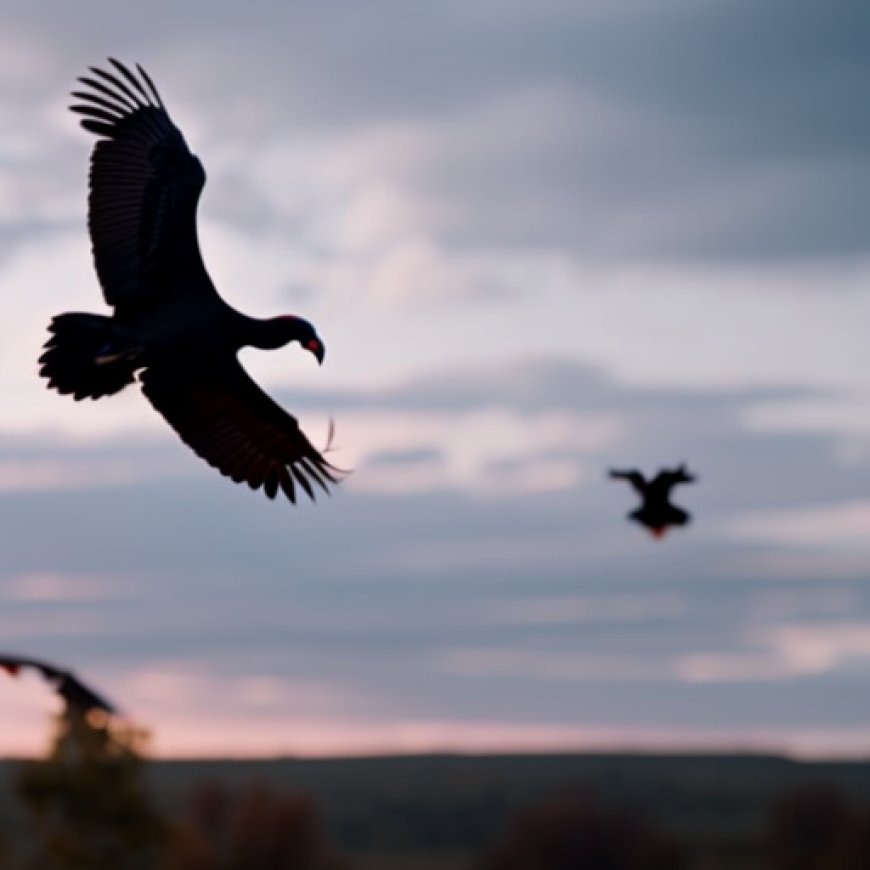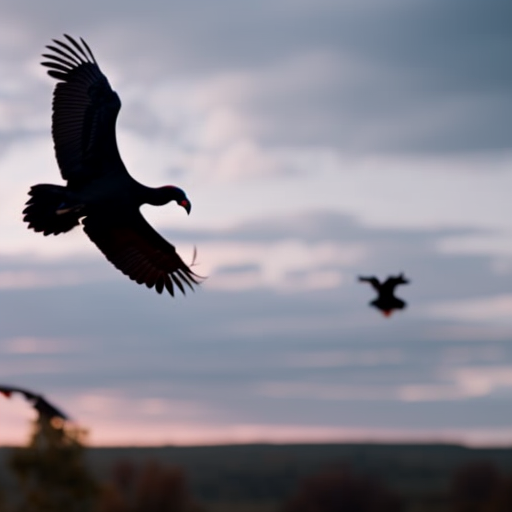Citizen science: Dept. of Conservation, Agriculture ask for help with black vulture study
Citizen science: Dept. of Conservation, Agriculture ask for help with black vulture study krcgtv.com


The Missouri Department of Conservation and the U.S. Department of Agriculture Seek Public Help for Black Vulture Study
The Missouri Department of Conservation (MDC) and the U.S. Department of Agriculture (USDA) are collaborating on a multi-year study to address the issue of black vultures in Missouri. The study aims to better understand black vulture movements, human-black vulture conflict, and test vulture management tools.
Background
Black vultures play a beneficial role in the ecosystem by consuming dead animals and metabolizing diseases like rabies, effectively removing them from the environment. However, their aggressive nature poses challenges for cattle ranchers and other livestock producers. These birds prey on vulnerable farm animals, cause property damage, and can be a nuisance to landowners.
Study Objectives
The primary objectives of the study are:
- To track black vulture movements and behavior
- To assess the impact of management tools on their behavior
- To understand the extent of human-black vulture conflicts
Tagging and Monitoring
A total of 89 black vultures near the Missouri-Arkansas border were captured and marked with white tags on their right wings. These tags, which bear a unique letter and number combination (e.g., A47 or C20), can be observed from below while the birds are in flight or perched. Additionally, 28 birds were tagged with radio transmitters to track their daily movements.
Reporting Sightings
The public is encouraged to report sightings of tagged black vultures to the United States Geological Survey’s Bird Banding Lab online at reportband.gov. Sightings can also be emailed to USDA Wildlife Biologist Eric Tillman at Eric.A.Tillman@usda.gov.
Sustainable Development Goals (SDGs)
This study aligns with several SDGs, including:
- SDG 15: Life on Land – By managing black vulture populations, the study contributes to the conservation of terrestrial ecosystems and biodiversity.
- SDG 12: Responsible Consumption and Production – The study aims to mitigate conflicts between black vultures and livestock producers, promoting sustainable agricultural practices.
- SDG 11: Sustainable Cities and Communities – By addressing property damage caused by black vultures, the study supports the development of resilient and sustainable communities.
Black Vultures vs. Turkey Vultures
While turkey vultures are more common in Missouri, black vultures are expanding their range northward. Black vultures have a large, black body with a bare, black head. They fly with their wings held nearly horizontal and often follow and observe turkey vultures from above. In contrast, turkey vultures have a bare, red head and hold their wings in a V position while soaring. Black vultures rely more on sight than smell to find food and frequently drive off turkey vultures.
Managing Black Vulture Nuisance
Livestock producers can employ non-lethal techniques to deter black vultures, such as making loud noises, spraying them with water, or using pyrotechnics (without a permit). Removing animal carcasses and eliminating potential roosting sites can also discourage black vultures. However, it is important to note that black vultures are protected by the Migratory Bird Treaty Act of 1918 and may not be killed without a depredation permit obtained from the Missouri Farm Bureau.
Reporting Damage and Seeking Assistance
Landowners who experience black vulture-related livestock loss or property damage can report incidents and request assistance by contacting USDA Animal and Plant Health Inspection Service – Wildlife Services at 573-449-3033 ext. 10. For property damage caused by black vultures, individuals can contact MDC Wildlife Management Coordinator Alan Leary at 573-522-4115 ext. 3693.
SDGs, Targets, and Indicators Analysis
1. Which SDGs are addressed or connected to the issues highlighted in the article?
- SDG 15: Life on Land
The article addresses the issue of black vultures causing problems for cattle ranchers and other livestock producers. This issue is related to SDG 15, which focuses on protecting, restoring, and promoting sustainable use of terrestrial ecosystems, sustainably managing forests, combating desertification, and halting biodiversity loss.
2. What specific targets under those SDGs can be identified based on the article’s content?
- Target 15.5: Take urgent and significant action to reduce the degradation of natural habitats, halt the loss of biodiversity, and protect and prevent the extinction of threatened species.
The article highlights the need to better handle black vultures in Missouri due to their aggressive behavior towards livestock. By addressing this issue, it contributes to Target 15.5 by taking action to protect livestock and prevent the potential extinction of threatened species due to conflicts with humans.
3. Are there any indicators mentioned or implied in the article that can be used to measure progress towards the identified targets?
- Indicator 15.5.1: Red List Index
The article does not explicitly mention any indicators. However, Indicator 15.5.1, which measures the Red List Index, can be used to assess progress towards Target 15.5. The Red List Index provides information on the conservation status of species and can help determine if actions taken to reduce conflicts with black vultures are effective in preventing the extinction of threatened species.
SDGs, Targets, and Indicators Table
| SDGs | Targets | Indicators |
|---|---|---|
| SDG 15: Life on Land | Target 15.5: Take urgent and significant action to reduce the degradation of natural habitats, halt the loss of biodiversity, and protect and prevent the extinction of threatened species. | Indicator 15.5.1: Red List Index |
Copyright: Dive into this article, curated with care by SDG Investors Inc. Our advanced AI technology searches through vast amounts of data to spotlight how we are all moving forward with the Sustainable Development Goals. While we own the rights to this content, we invite you to share it to help spread knowledge and spark action on the SDGs.
Fuente: krcgtv.com

Join us, as fellow seekers of change, on a transformative journey at https://sdgtalks.ai/welcome, where you can become a member and actively contribute to shaping a brighter future.







